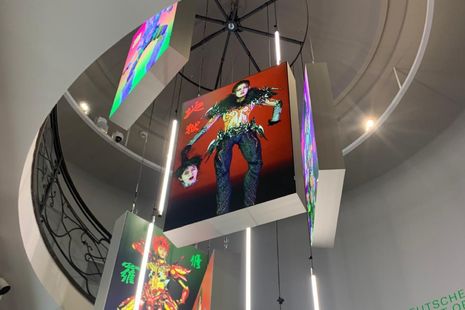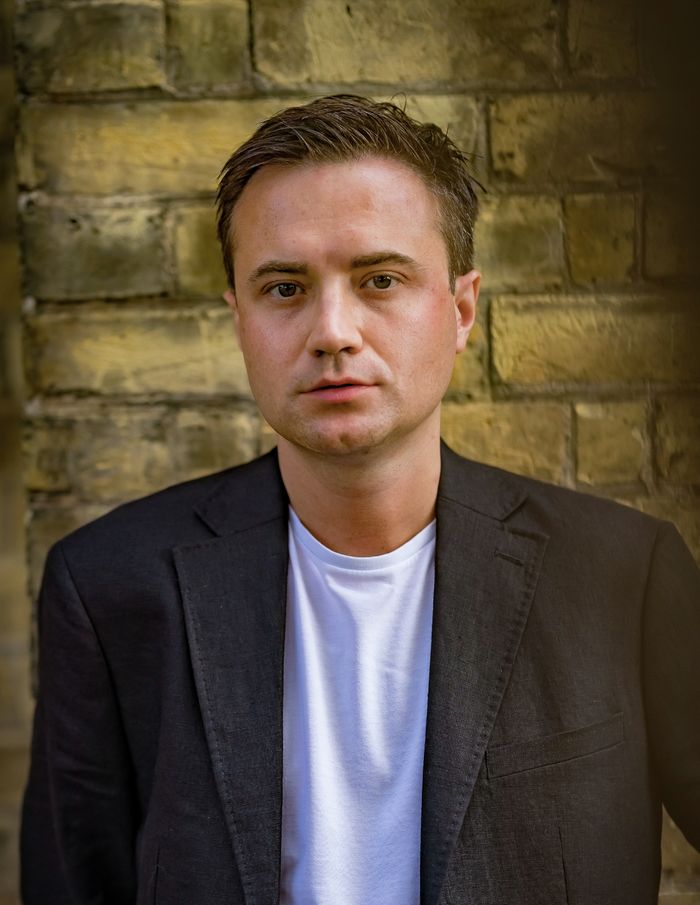Lu Yang’s many faces of modern-day existentialism
Evan Scott explores the Shanghai-based artist’s fusion of Buddhist philosophy with East Asian pop culture

On a dusty, digitally rendered plane, a lone figure looks outwards at nothing. Deep in a flaming abyss, a shimmering avatar dances wildly. It grins, swinging a grimly visaged head on a chain. These scenes portray two of the six realms of ‘samsara’ in Lu Yang’s ‘DOKU’. According to Buddhist doctrine, this concept (meaning the cycle of suffering that is existence) comprises six entities: animals, humans, gods, demi-gods, hungry ghosts, and those resigned to hell. A masterful piece of existential fiction inspired by the rich belief system of Buddhism, the visual arts exhibit included a series of animated character sequences and a longer film piece. I have always had a great interest in Buddhism, and love video game-style art, so this exhibit was a must-see for me. The strikingly dressed cast contrasted powerfully with their cultural context: arcane lore projected onto pixel models.
“Each vibrant character wore the identical, expressionless face of the artist”
Doku spoke to my growing spiritual questions for the world. Throughout history, humanity has experienced and caused various calamities, and spiritual structures grow to cope with that. Existing in the current political, environmental, and social climate has me wondering: how can I deal with this tumult? Whilst I haven’t reached any conclusions yet, learning about different religions and philosophies has been of great comfort to me.
I enjoyed ‘DOKU’ so much because of how it incorporated Buddhist symbolism in a very modern way. Lu Yang, at one point in the exhibit, presents the six bodies of samsara as members of a k-pop-style boy band, dancing in synchrony in colourful suits. The absurdity of the scene struck me. I was particularly moved by the faces of each vibrant character: they wore the identical, expressionless face of the artist. When confronted by the world, I often feel so powerless and overwhelmed, my face growing blank and tired. Despite the otherworldly, somewhat uncanny, appearance of DOKU’s characters, it was easy to project myself onto them.
“Forced to confront the many versions of self in the face of death, I looked inward, questioning if my existence was eternal”
Within the self are many facets, in the imagination many forms of expression. It’s what I love about video games: the ability to extend the self through the digital world. ‘DOKU’, inspired by East Asian pop culture, draws on this. We see glimpses of the artist in each of these six avatars; they are not limited to their human form and instead place the artist at different stages of reincarnation. I found this somewhat relevant to my daily life: as I grow into adulthood I look back on the stages of my life, thinking about how I have changed and will be affected by the world as I continue to live.
Here, the theme of death and rebirth was undeniably present. Assuming each character was the same being in different stages on the path to nirvana (the escape from the cycle of reincarnation) added a depth to the piece that made me reflect on the versions of myself that I’ve left behind and will come to be. The self is made up of every version of ourselves, real and imagined. Forced to confront the many versions of self in the face of death, I looked inward, questioning if my existence was eternal. I am man and hungry ghost, animal and warrior, many sides of the same dice.
But that’s getting a bit metaphysical… ‘DOKU’ was also a lot of fun, an amazing display of the intersection between art and technology. As it becomes increasingly dominant in our lives, it’s no surprise that technology would become a medium in art. The digital realm allows what the physical doesn’t, permitting the creation of leviathan sculptures and impossible scenes. Lu Yang’s character design has a lasting effect. Each one was so vivid and unique, crafted from digital metals and fabrics that don’t yet exist. The piece had an otherworldly feel, as, indeed, many of the scenes happened in places we can’t usually reach: heaven and hell, wide open skies and deep inhospitable deserts.
As an amateur creator myself, I’m excited for the future of human expression in art. When I draw and write, I can’t help but want to show myself more to the viewer; words aren’t enough, paint cannot express my true feelings. Feeling trapped by my art, limited to the 2D or written word, I long to connect deeply. ‘DOKU’ communicated something truly human through its abstract depiction of life and death, drawing on cultures old and media new, to communicate the pain of existence and the hope for answers in such a confusing world.
 News / Caius mourns its tree-mendous loss23 December 2025
News / Caius mourns its tree-mendous loss23 December 2025 Comment / Yes, I’m brown – but I have more important things to say22 December 2025
Comment / Yes, I’m brown – but I have more important things to say22 December 2025 Interviews / Politics, your own way: Tilly Middlehurst on speaking out21 December 2025
Interviews / Politics, your own way: Tilly Middlehurst on speaking out21 December 2025 News / Clare Hall spent over £500k opposing busway 24 December 2025
News / Clare Hall spent over £500k opposing busway 24 December 2025 News / King appoints Peterhouse chaplain to Westminster Abbey22 December 2025
News / King appoints Peterhouse chaplain to Westminster Abbey22 December 2025









